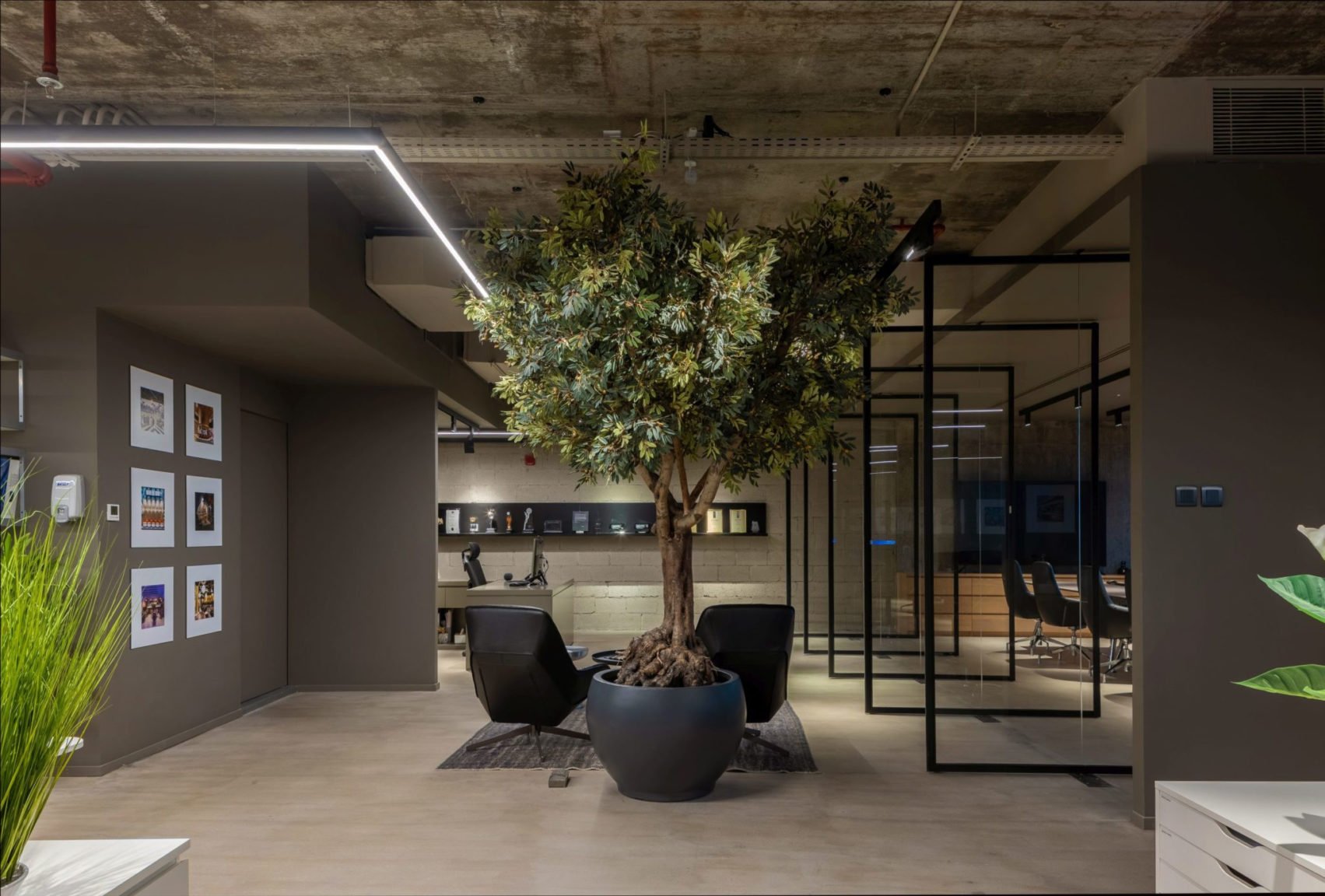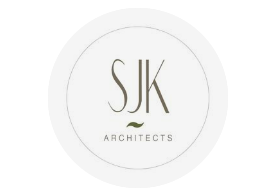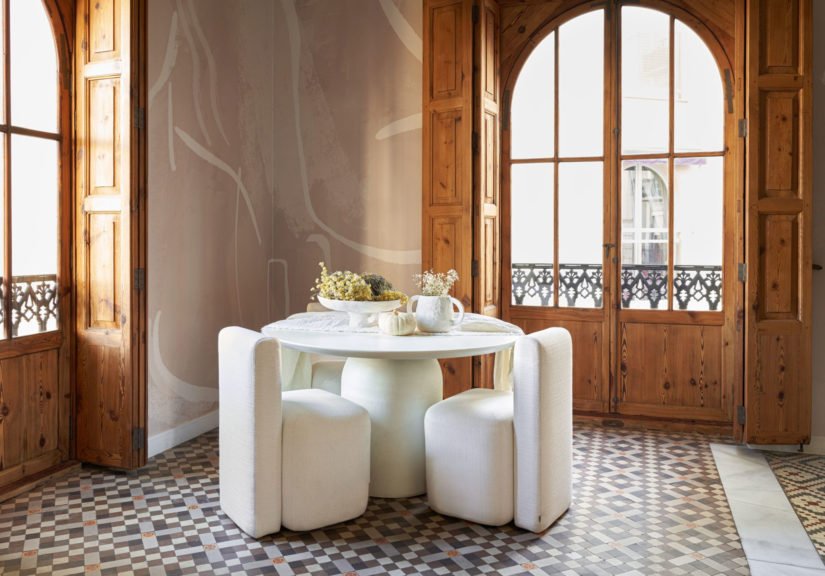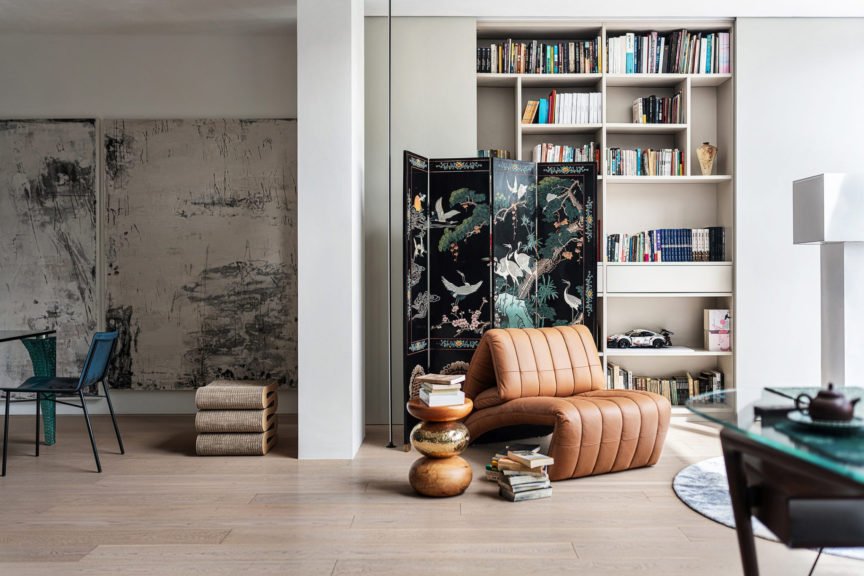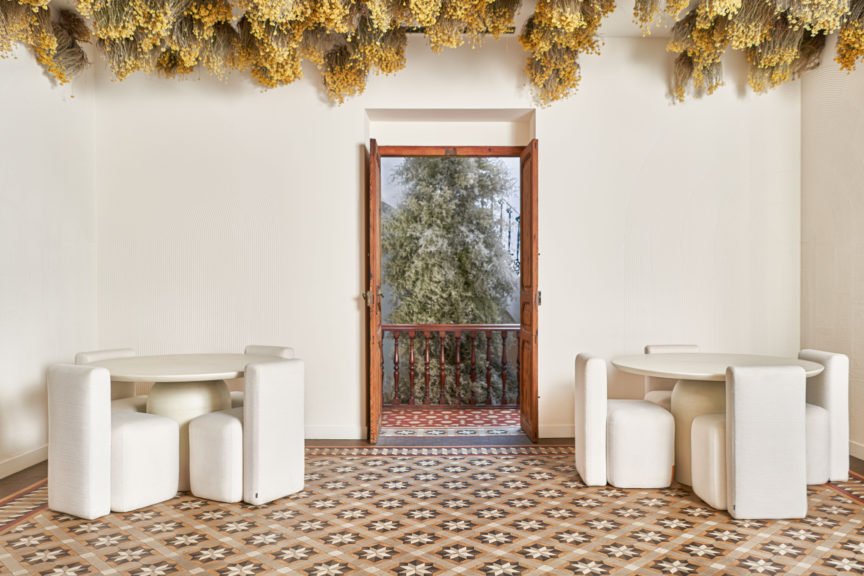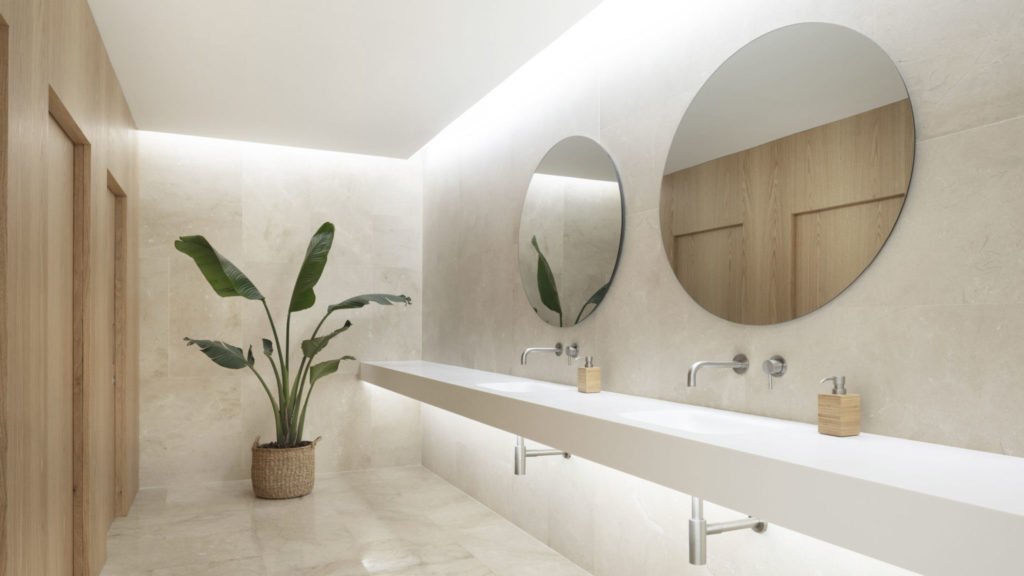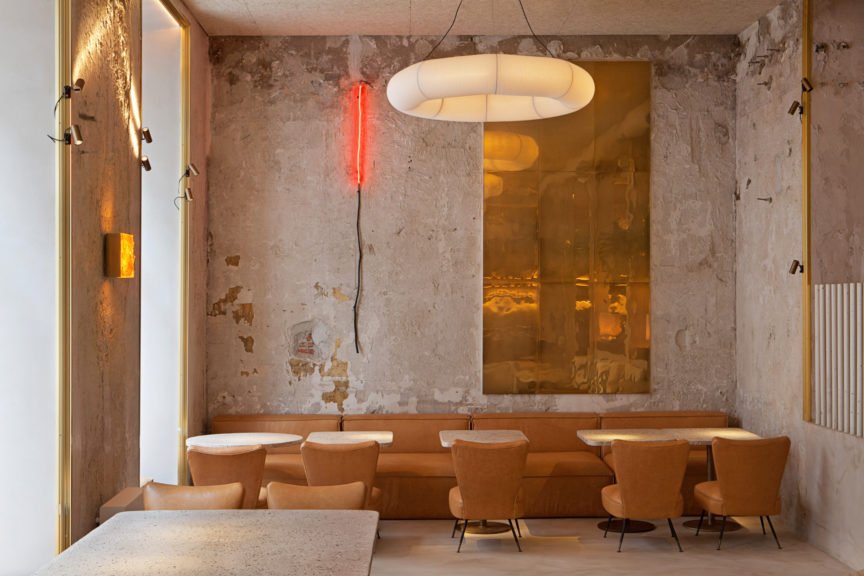Brutalist Interior Design embodies ‘bold beauty,’ a style that originated in the 1950s focusing on exposure, rawness, and creating an audacious spatial experience. In a brutalist space, one is surrounded by highly expressive and emphasised forms. What distinguishes them? The fundamental characteristics that define the elusive grey-themed spaces are strong sculptural elements with bulky and unfinished, stark and monolithic expressions.
Brutalist interior design provides a flexible canvas, allowing designers to conceptualise spaces by integrating the inherent nature of each material. Incorporating minimal furniture, curved elements, accent lighting, and contrasting textures and materials are some of the ways to beautify a brutalist space.
History: A Walk To The Past
Emerged during the post-war era of the 1950s, Brutalism (termed by architectural historian/critic Reyner Banham) introduced an alliance with industrial materials, predominantly concrete. As a pragmatic response to housing challenges of the era, architects, engineers, and designers strove to harness the industrial techniques, devising a modern solution with subtle historical emphasis.
At times tacky yet sophisticated, this solemn material (concrete) gave rise to massive and dynamic forms, devoid of decorative elements, embodying a vision that pivoted on a structural, abstract, and organic palette.
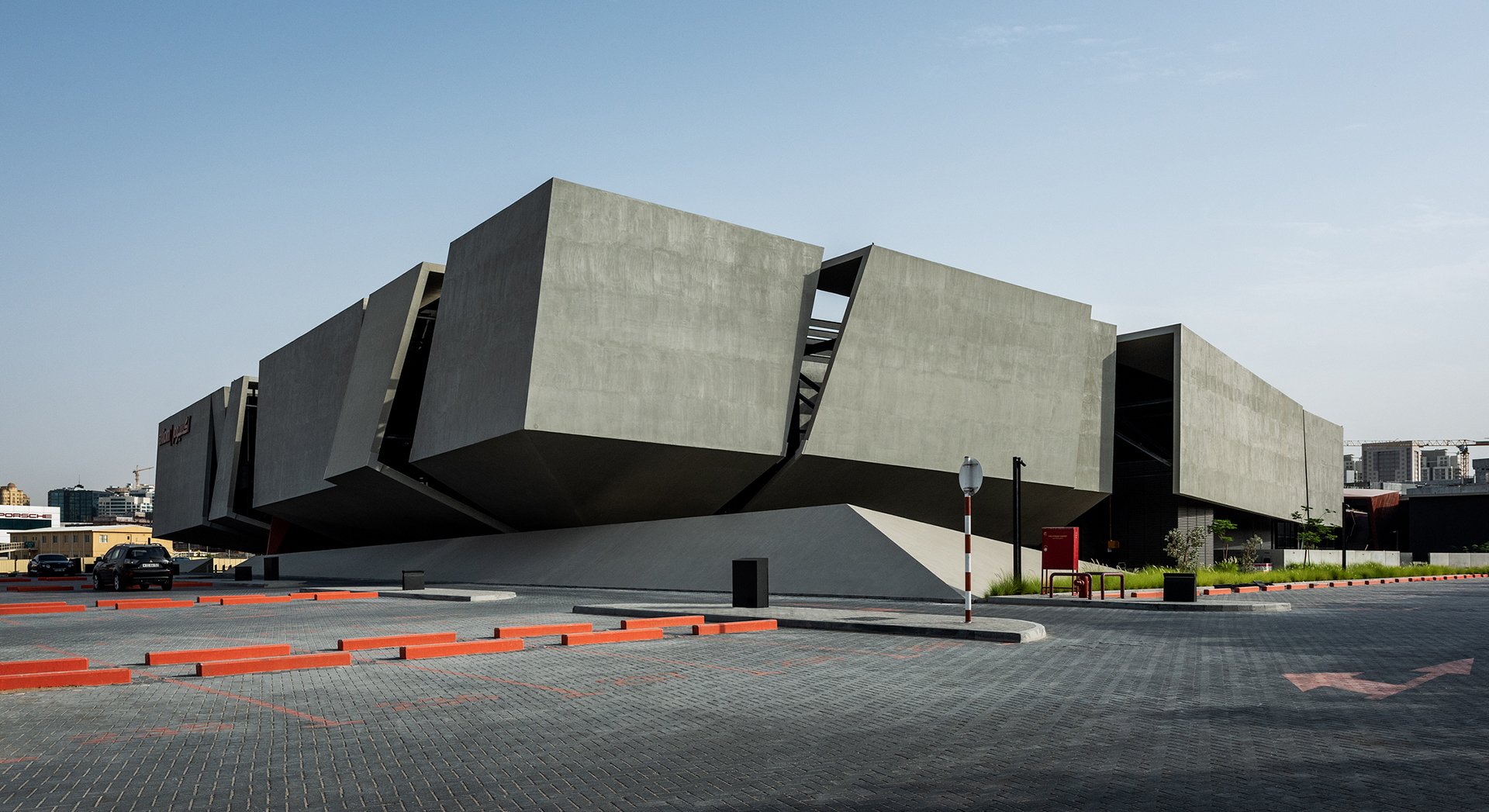
Key Features: Crafting a Brutalistic Personality
Upon entering a concrete-themed space, brutalism irrefutably oozes in every corner. What makes these robust spaces warm and welcoming? Let’s dive into a few key features:
1. Adding Layers of Depth
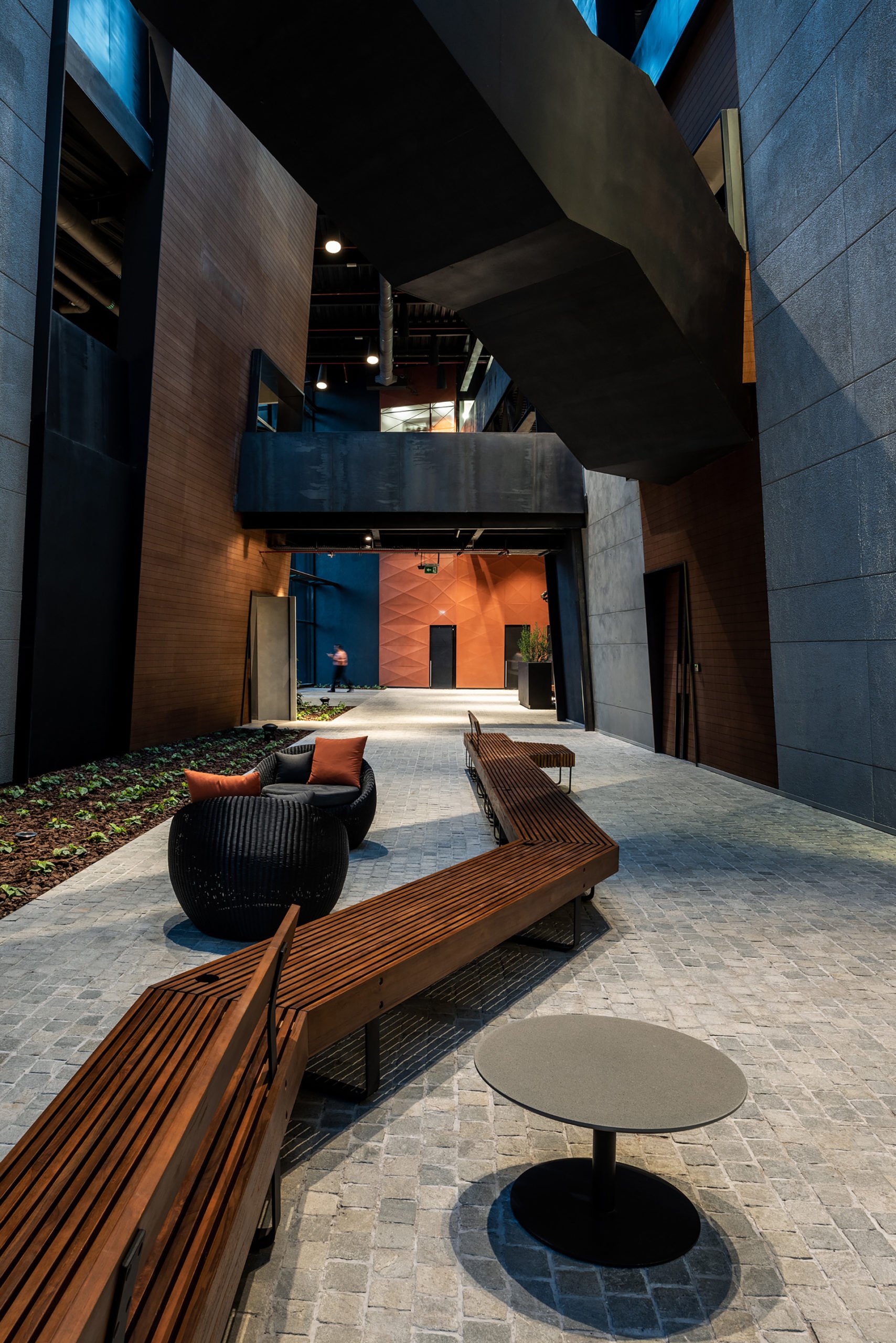
Brutalist Interior Design is heavily influenced by its solid massing, machine aesthetic, and rugged textures, instils a sense of depth in the varying structural frames and jagged shapes. These contemplative elements pulsate the emotional and mental core of every user.
2. Contrasting Material Combinations
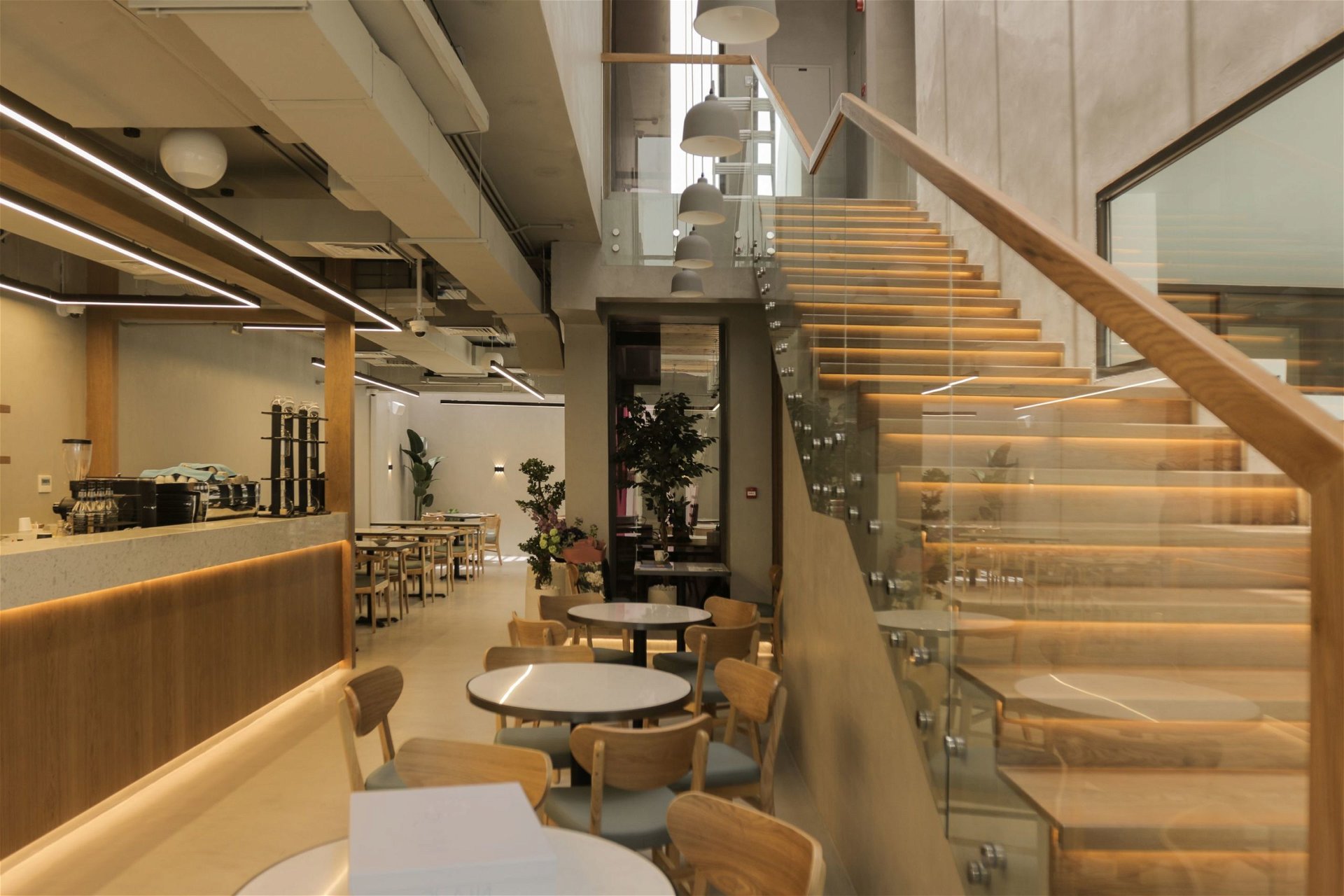
Strategically organised by blending contrasting materials like concrete and wood, glass and metallic finishes – these diverse elements contribute a qualitative aspect, enhancing the interior space with a sense of complexity while also defining the geometric grammar.
3. Green Galore!
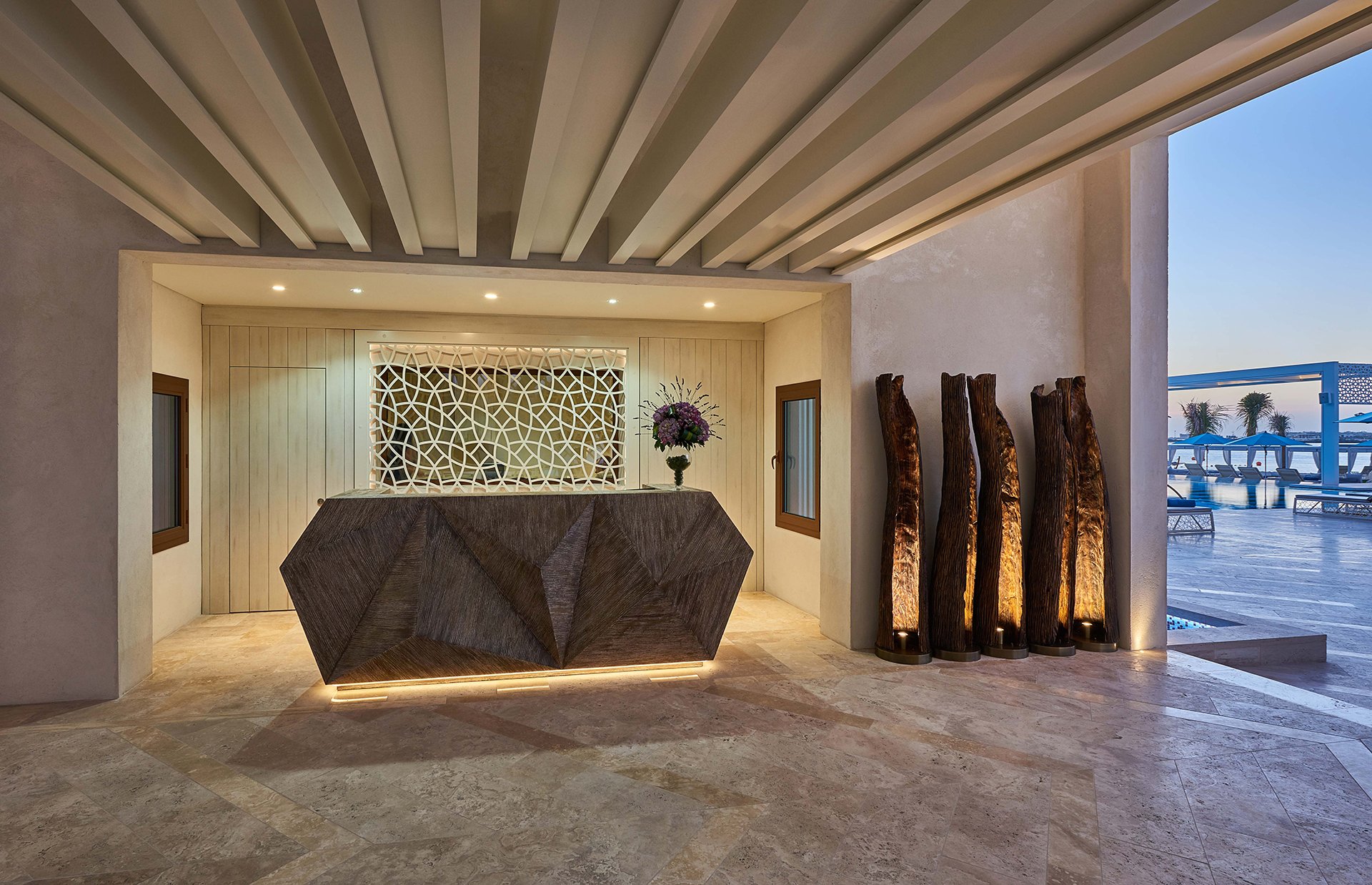
Ostería del Becco Restaurant, Mexico by Sama Arquitectos; Photograph Courtesy: Jaime Navarro
Fusing green plants and natural foliage within a brutalist space, it creates a soulful ambiance amidst the otherwise gritty atmosphere. In contrast to the harsh concrete, greenery elevates the interior environment by generating visual interest and also celebrating life within austere forms.
4. Drama of Concrete and Wood
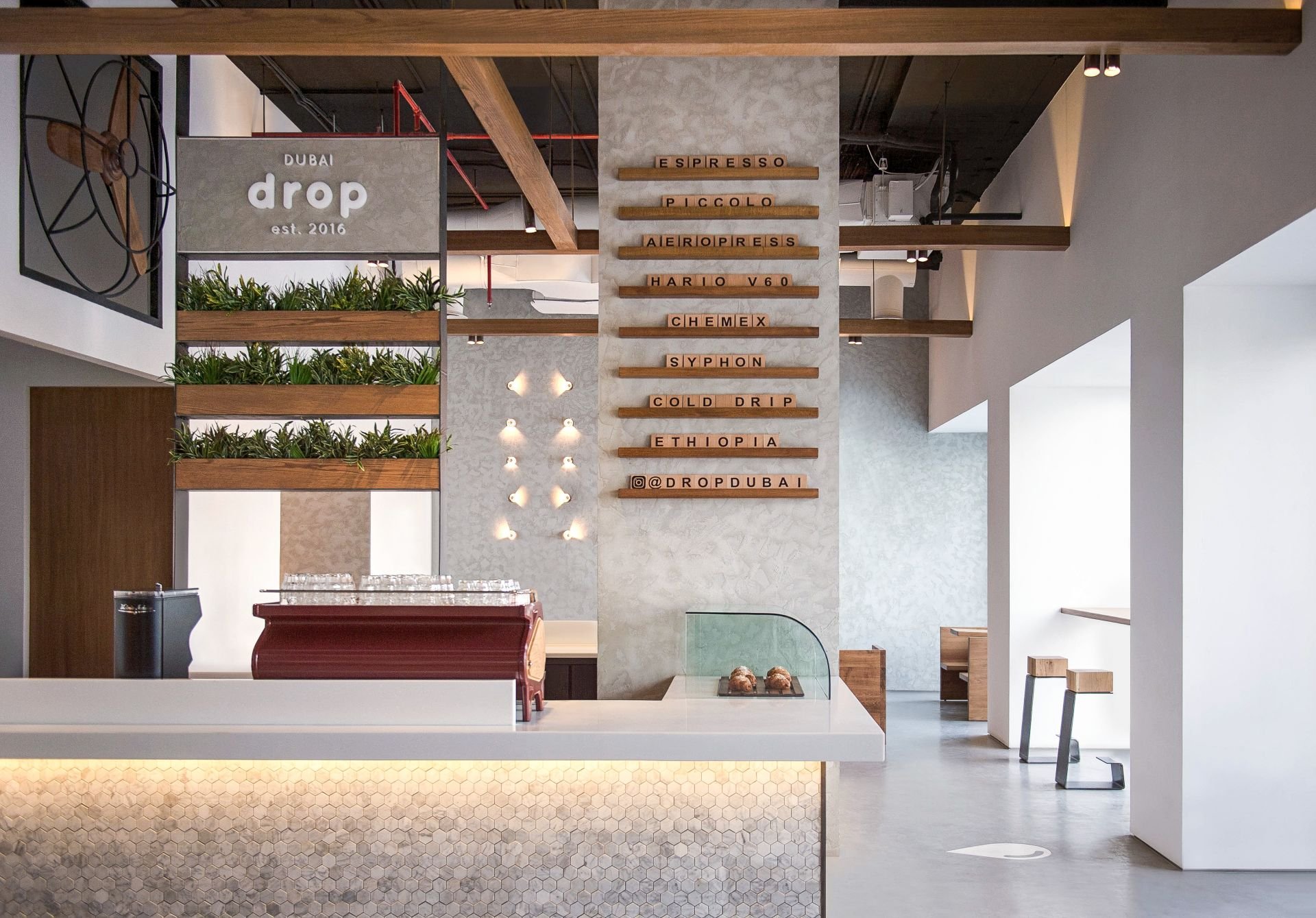
Amidst the grey hues of sculptural concrete, wooden details offset the monochrome theme with warmth and grace. Be it as furniture, interior decor, frames for openings, or flooring and ceiling finishes, the timber gleams and imparts a softening touch to the space.
5. Splashing Neutral Shades
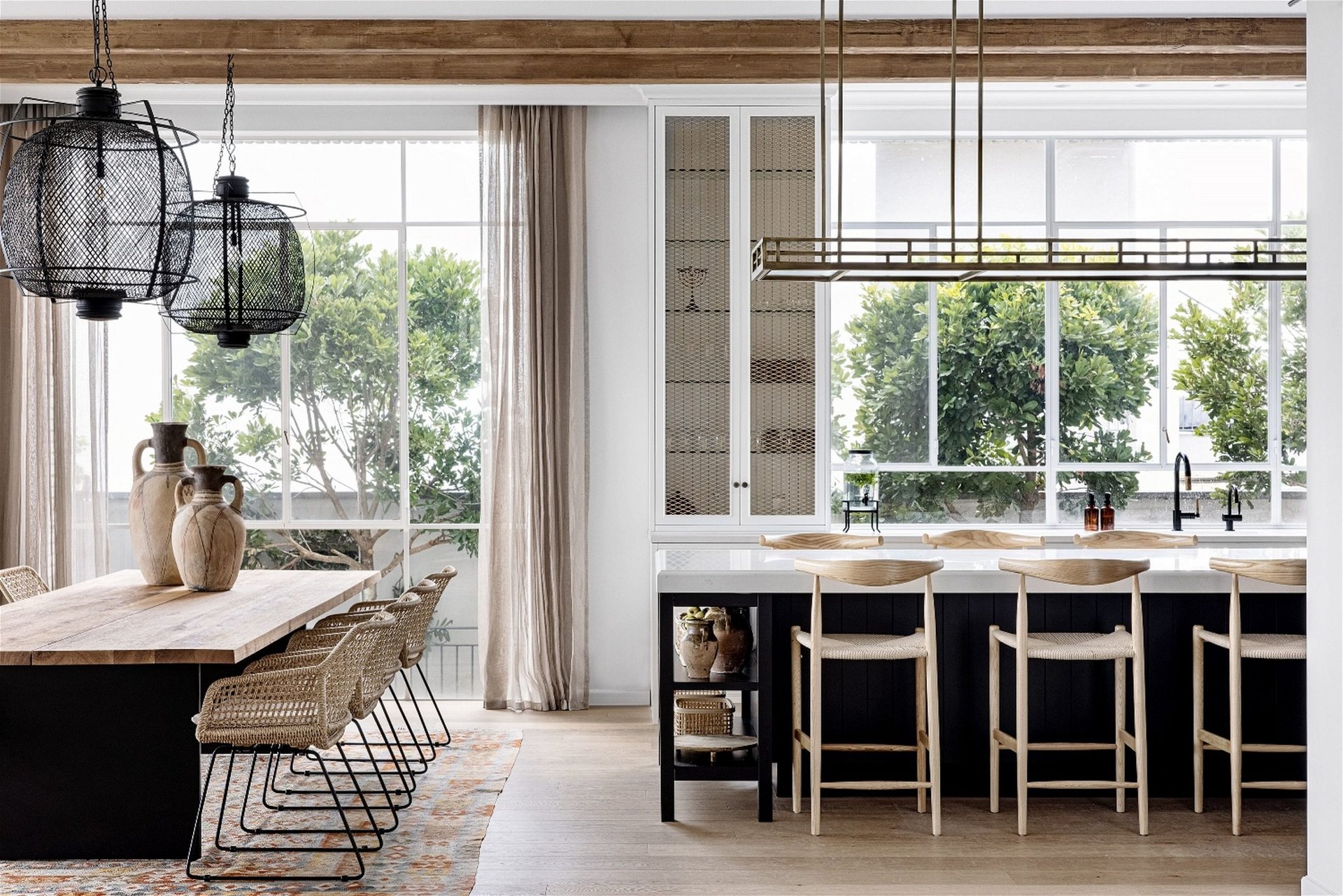
Striking a chord to balance the dominating monochrome palette – warm wood tones, soft cream fabrics, black metal finishes, as well as polished stone, chrome, and brass inlays, come together to weave a subtle harmony. Also, the incorporation of curved and chamfered edges, in the geometry of interior elements, amiably contrasts the bold structural exaggerations.
Cues: Four Fundamental Principles
Brutalist interior design is defined by four factors that truly enhance the spatial aesthetic and function.
1. Blissful Brilliance
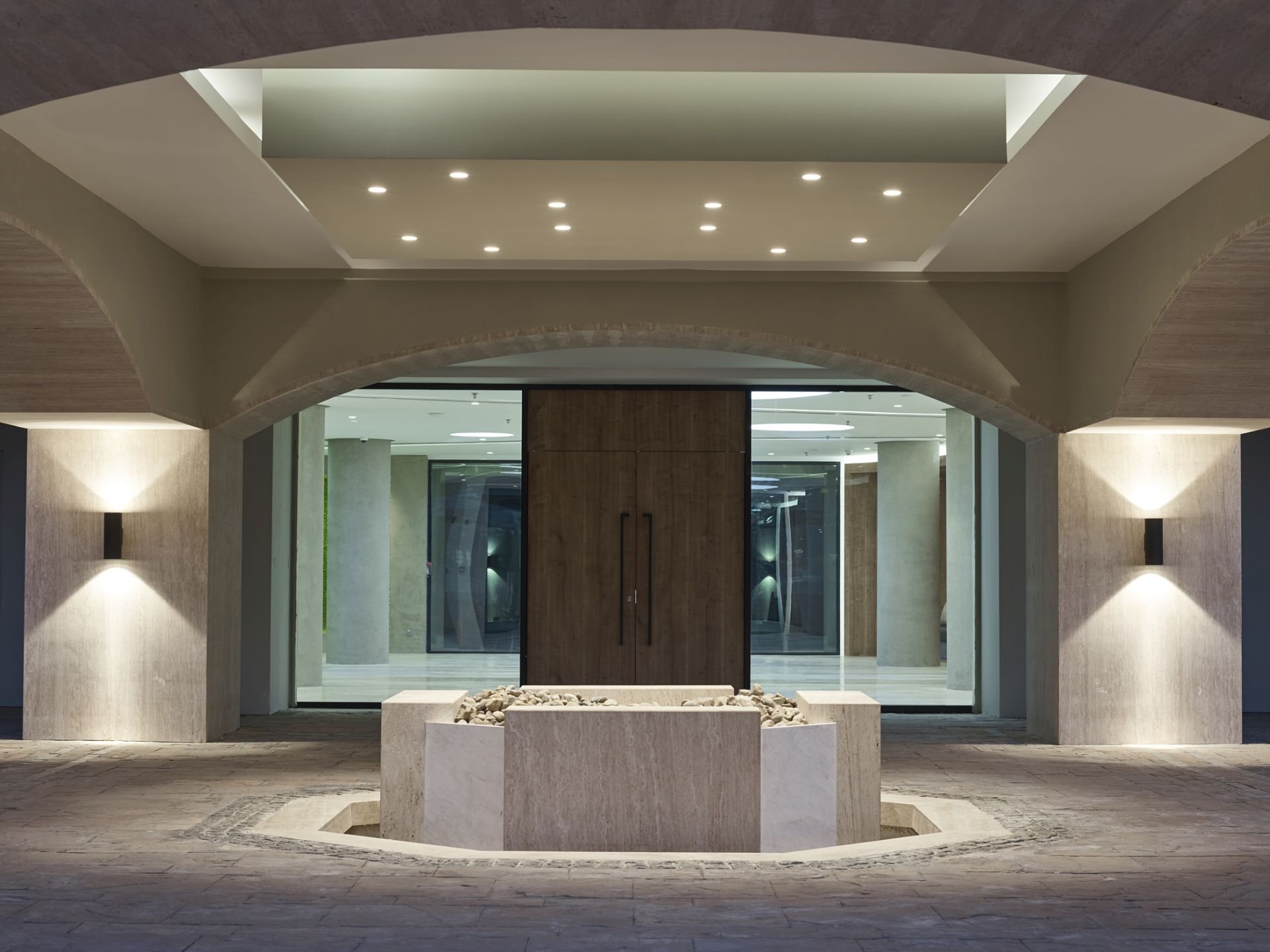
Lighting and light fixtures play a crucial role in brutalist environments. Contemplating large openings or even crafting pockets to invite natural light imbues the spaces with a lively quality. Ambient lighting featuring warm shades and globular-shaped fixtures illume a captivating aura within a greyed landscape.
2. The Concept of Béton Brut
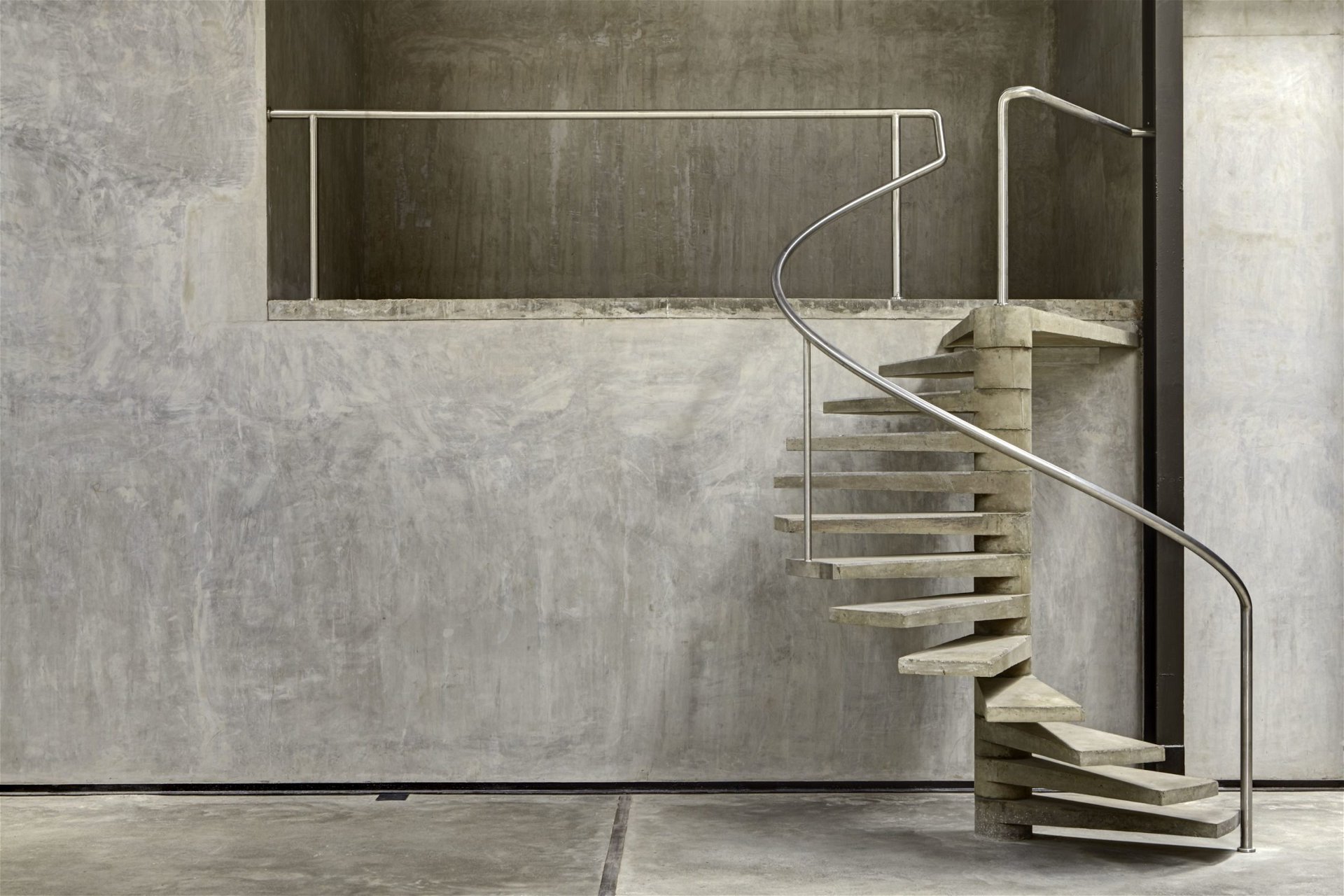
Béton Brut, a term coined by the legendary Swiss architect Le Corbusier, is a French phrase that translates to ‘unfinished’ or ‘raw concrete’. It represents a method of using concrete to showcase the patterns imprinted on it by its formwork. Philosophically, it also signifies the act of showcasing the truth or true nature of architectural elements within a space.
3. Purity and Simplicity
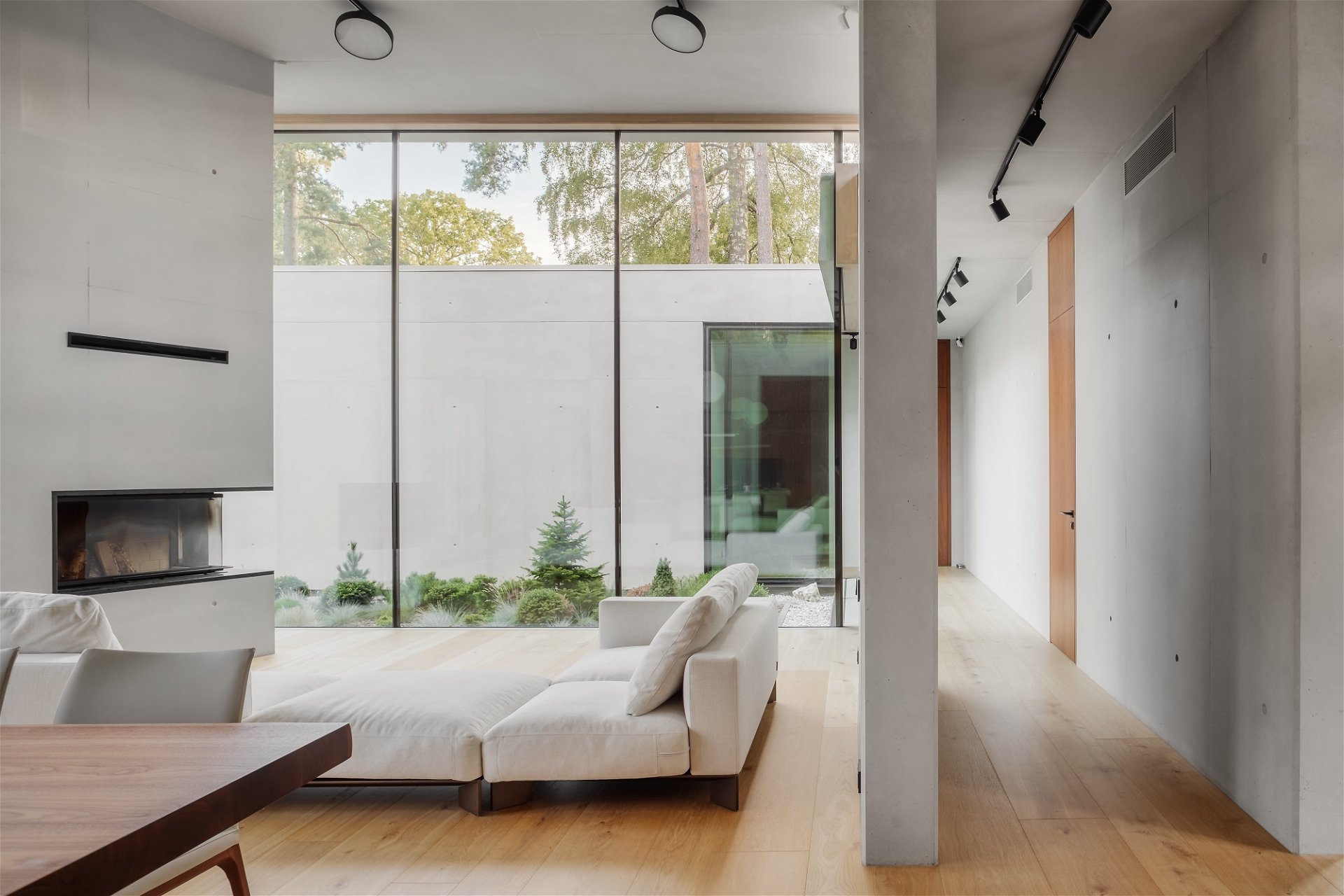
The House In Jurmala, Latvia by Chado Studio | Photography credits: Alvis Rozenbergs
At its core, brutalist interior design is all about honesty. There are no stylised patterns, no decorative finishes, no polished surfaces, nor laboured carvings—brutalism glorifies every element for its purity and simplicity. Orchestrating simple brutalist essentials in combination with pastel beige tones – they instil the spaces with a light charisma.
4. Embrace the Solitude
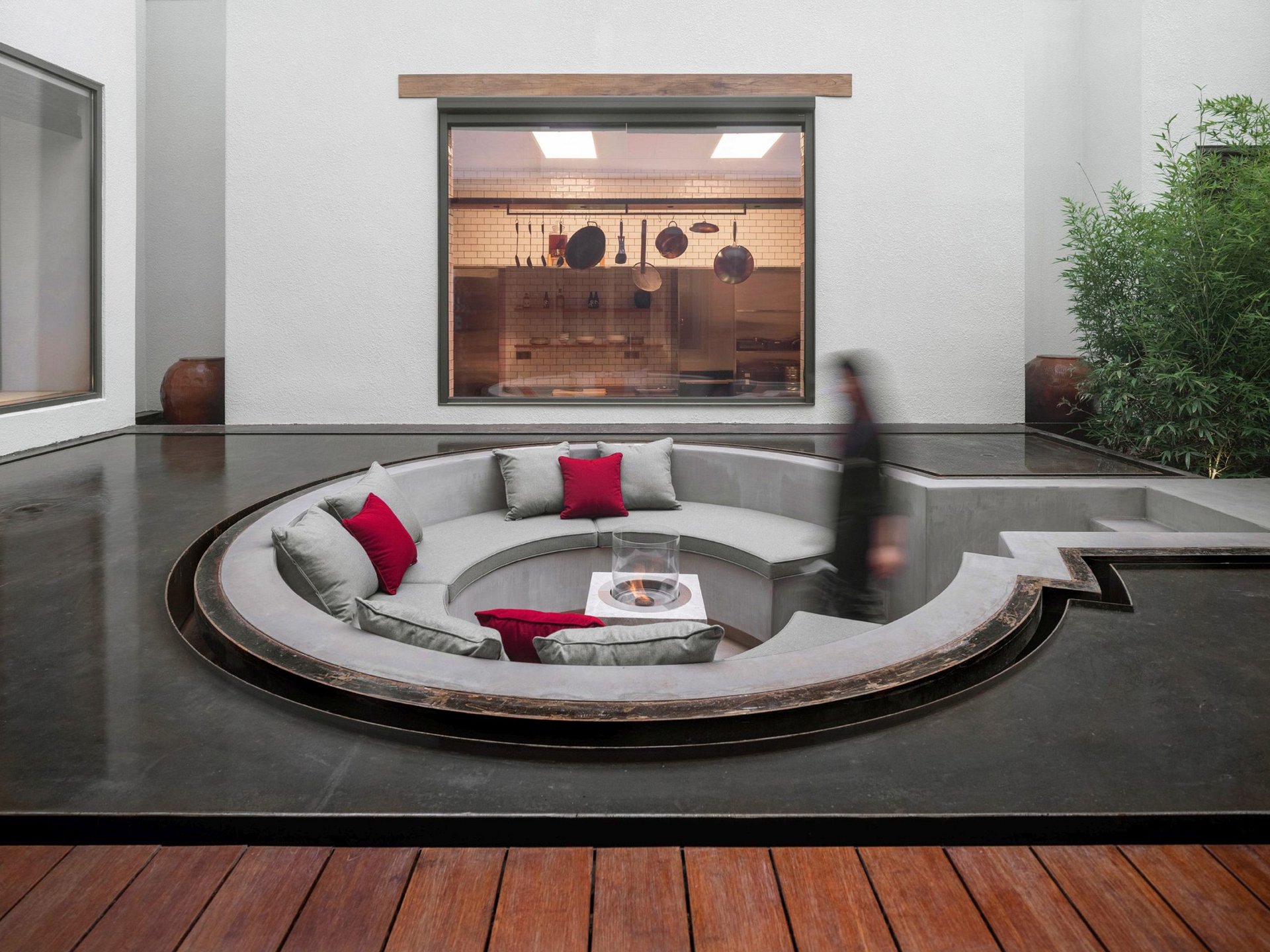
The minimalist elements in a brutalist space are designed to captivate our senses. The intentional absence of attention-grabbing elements invites every user to find solace and foster deep introspection within oneself.
5. Repurposed Elements
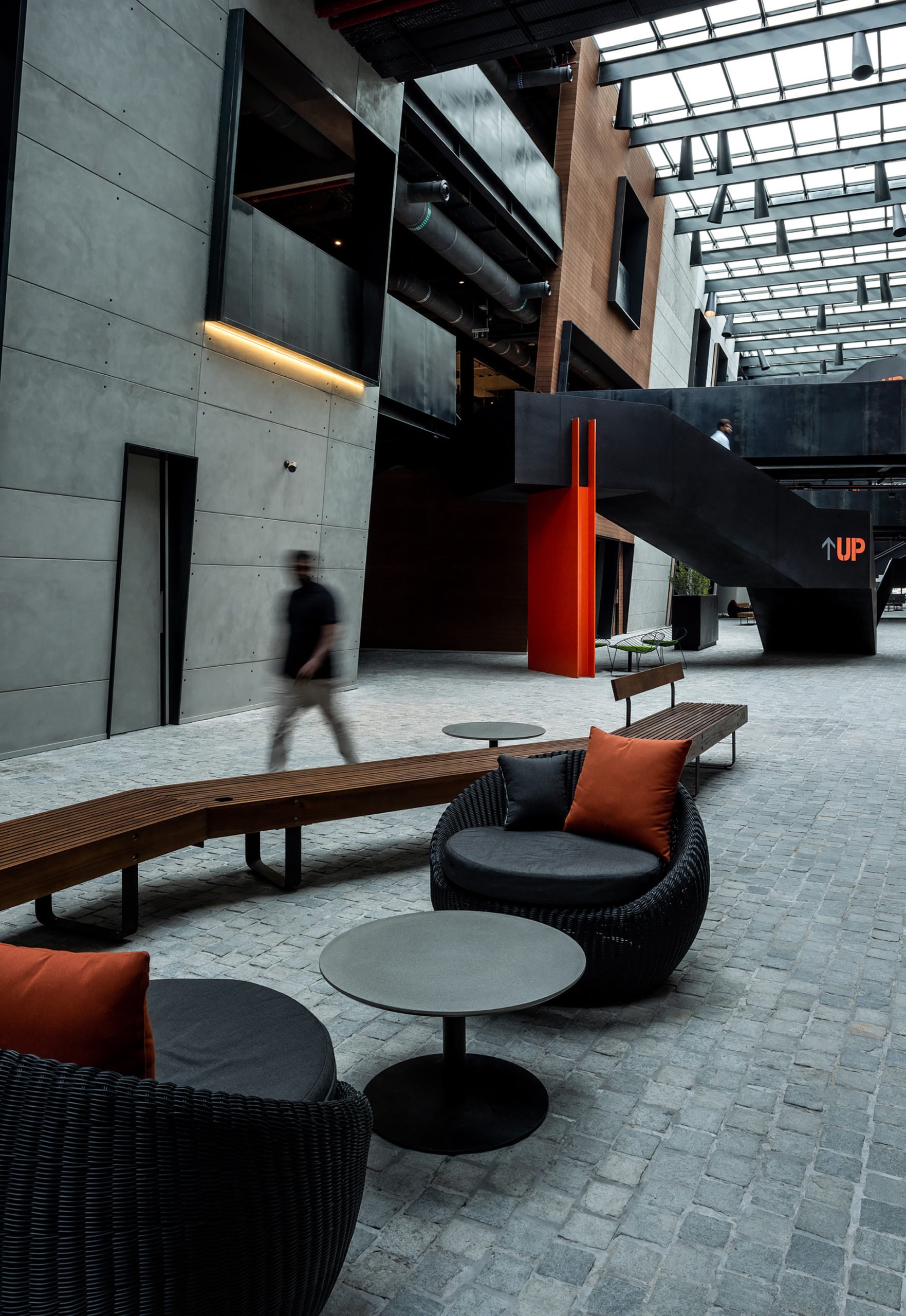
Elevate your industrial design by repurposing elements from the past. Salvaged factory windows can be used as room dividers or antique industrial machinery parts can become sculptural decor pieces with historical significance. Old workbenches featuring sturdy wooden tops and metal bases can be repurposed as kitchen islands, dining tables, or writing desks.
Brutalist Interior Design: Bold Harmony Unleashed
In brutalist interiors, you’ll find spaces in their raw form – exposed and unadorned. Splash pastel colours into the grey hues, integrate contrasting wooden elements in certain judicious zones, and incorporate minimal furniture that syncs and soothes with its dense surroundings. Scoop out chunks of structural mass, making way for sunlight to seep into the setting, and use warm lighting and fittings to soften the overwhelming proportions. Also, remember to adorn interior spaces with green foliage, as they ensure to bring a refreshing outlook.
Brutalism, as a concept, aligns with an unrefined expression—one that carries heaviness yet provides an unparalleled experience inside as well as outside. In recent times, this concept has experienced a revival, with many exploring its themes in unique ways.
And it certainly stands out as a class apart!
Industrial Interior Design vs Brutalist Interior Design
Left to right: Hira Industries, Ras Al Khaimah by Swiss Bureau Interior Design; Photography Courtesy: Bahr Al-Alum Karim Photography | Capital Bank of Jordan, Amman by Paradigm Design House
Even though you could find some similarities and overlapping elements, the two styles are distinct and each portrays their own character and perception. Industrial interiors are derived from old factories and warehouses, and this style integrates industrial utilitarian elements with exposed and reclaimed materials in their raw form. Brutalist interiors are etched from the brutalist architectural movement, which emphasises on raw and exposed look with a sense of geometric grammar, monumentality and sculptural beauty.
Industrial spaces showcase a weathered look, with natural earthy tones emphasised by greys, browns and blacks, along with metal frames and repurposed vintage industrial elements. Brutalist spaces showcase a bold, massive character with neutral and monochrome shades of grey, beige and brown along with concrete, steel, glass and stone.
Both industrial and brutalist interiors share notions of raw materials and unfinished aesthetic, yet they distinguish in their expression, inspiration, and execution.
Article info
Article:
Date added:
6 February, 2024

